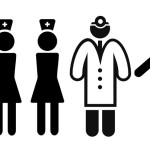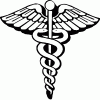While most medical assistant jobs are still located in doctor’s offices, a new type of facility is quickly gaining ground as an excellent environment not only for workers, but also for patients. It’s called a patient-centered medical home (PCMH), and it’s a method of organizing and delivering primary care that’s comprehensive, patient-centered, coordinated, accessible, safe and of high quality. To become accredited as a PCMH, a medical practice or network must ensure it follows a set of guidelines that define a medical home.
Here’s a rundown of its primary attributes:
Continue reading →
It might sound like something out of a Hollywood comedy like Home Alone or Christmas Vacation, but medical injuries sustained while putting up holiday decorations have increased in frequency for four consecutive years now, according to the Consumer Product Safety Commission. The government group estimates that there were 15,000 visits to hospital emergency rooms related to holiday decorating in 2012, the most common injuries being falls (34%), lacerations (11%) and back strains (10%). This was the fourth straight year that the number of holiday medical emergencies has topped 12,000.
Here are some safety guidelines to help you avoid joining those ranks.
Continue reading →
Modern technology has made everyday life much more convenient, but there’s a very “inconvenient truth” about the health risks posed by the constant typing and clicking on computers and other digital devices. One newly coined medical condition in particular has spread rapidly over the past couple of years and has come to epitomize our dependence on tech gadgets: “text neck.”
This condition is a literal pain in the neck, a form of repetitive stress injury (RSI) caused by frequently bending the neck forward and hunching the shoulders while looking downward at digital devices — particularly portable ones like smart phones and tablet computers. And with text messaging experiencing a boom in popularity — increasing from 12.5 billion texts per month in 2006 to a whopping 196.9 billion texts per month in 2011 — text neck is only going to get worse. In fact, a 2009 study found that 83% of participants felt pain in their necks or hands during texting.
Continue reading →
If you type the words “cotton ball” into Google nowadays, one of the first phrases to pop up is “cotton ball diet,” which should be all you need to know about how popular a trend this is. That’s right; more and more people are actually eating cotton balls in order to lose weight. The thought behind this wacky trend is that these densely packed objects make you feel full without eating a lot of food. It’s something that has been going on in the weigh-obsessed model industry for years but has broken through into the mainstream this year, perhaps spurred by an interview that model Bria Murphy (daughter of Eddie) gave to Good Morning America in which she said she’s heard of peers who eat cotton balls dipped in orange juice in order to stay thin.
Continue reading →
When people think about the impact of the Affordable Care Act, AKA “Obamacare,” they tend to consider how it affects patients seeking medical care, but it is set to have a significant impact also on workers within the healthcare industry, including medical assistants. With increased access to healthcare coverage for Americans nationwide, there will be an increased number of patients — an estimated 30 million by 2016 — who were previously uninsured and are now eager to utilize their new coverage. As one healthcare professional put it, “When people have health insurance, they demand more healthcare.” And more healthcare, of course, means more patients, which in turn means a greater need for medical staff. By some estimates, medical jobs could expand by 250,000 to 400,000 a year for the next decade.
Medical assistants in particular will come in handy because it’s expected that the newly insured patients will be more likely to visit doctors’ offices — where most medical assistants work — rather than going to a hospital emergency room.
Continue reading →












